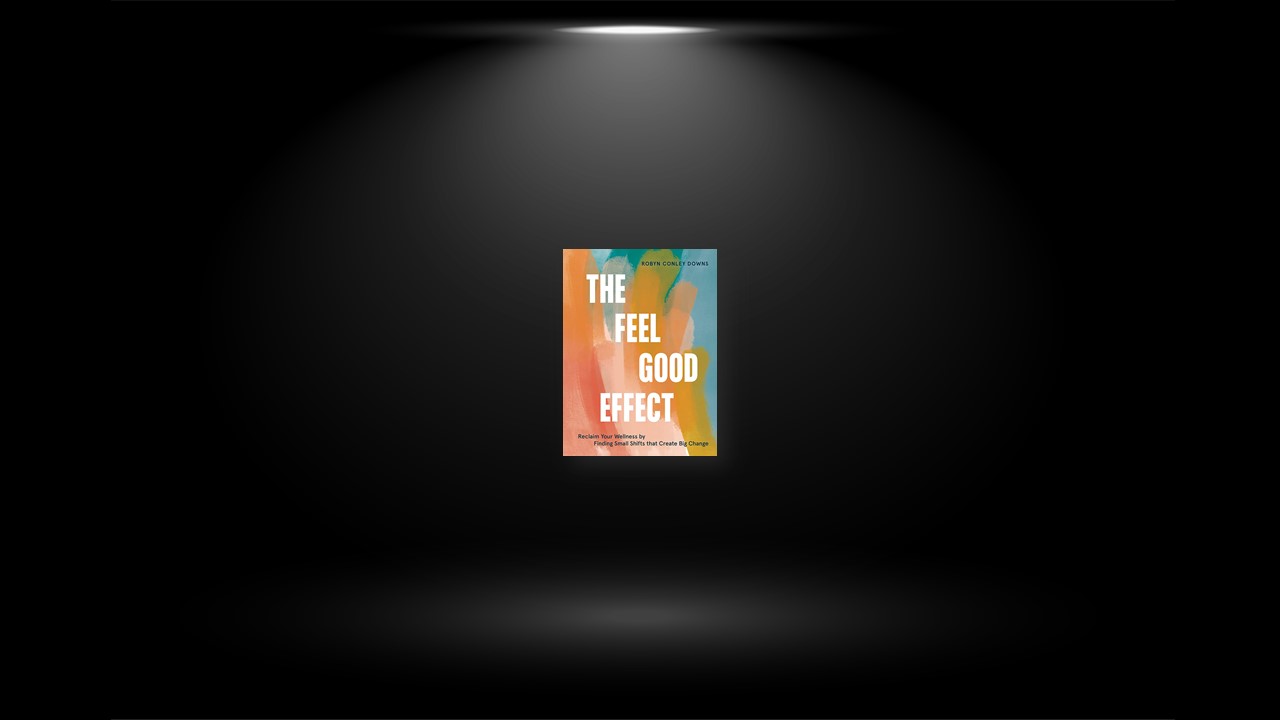Change Your Brain, Change Your Life
the vast majority of New Year’s resolutions fail, gym memberships go unused, and diets get abandoned. The dirty little secret is that motivation by itself is simply not enough to sustain long-term change. Sure, that initial burst gets you to sign up for the gym, to download the app, to buy all the groceries, but when it comes to sticking with it over time, it doesn’t last. Because in the never-ending search for wellness, we’ve missed something monumental.
What we’re missing is mindset.
Mindset—the way you think—is actually what most affects your decisions, actions, and ultimately your results. That’s why just trying to be motivated, or disciplined, or have willpower doesn’t work long term. In truth, motivation, discipline, and willpower are all mental resources that deplete over time. Alone, they aren’t enough to change what you do every day or to get lasting results. A much better use of your time and attention is to focus on the specific skills and actions you need in order to create sustainable change. These will allow you to be committed and consistent.
The tricky thing about mindset is it’s…well, invisible. It’s a sneaky saboteur, so ingrained that it can keep you stuck and feeling terrible for years. It’s probably the real reason you’re not getting results. In truth, the way you think—your ingrained thought patterns—make a huge difference in how you live, affecting everything from your ability to be resilient and adopt new strategies to the formation of new habits and making daily decisions, all of which impact your results.
The Striving Mindset
Have you ever tossed and turned in bed at night, mind racing, feeling like the day passed in a blur of business, yet somehow feeling like you have nothing to show for it? Or have you ever wanted to try something new—a way of eating, a workout, a project at work—but felt paralyzed because you couldn’t figure out where to begin, couldn’t seem to get it all right from the start? Or maybe you feel it’s hard to stop and celebrate small wins in life because, no matter what you do, there’s always something more, someone doing it better, or another milestone to achieve? Perhaps life feels like it’s zooming past, and you can’t seem to pause long enough to enjoy it.
While these scenarios may seem quite different from one another, they all have one thing in common: they all describe striving. Striving is so pervasive, such an ingrained part of Western culture, that we often can’t even see it. We celebrate and revere people who strive, people for whom good enough is never good enough. The athlete who sacrifices everything in the pursuit of greatness. The CEO who works all hours day and night, going without sleep, food, or rest to rise to the top. Go big or go home; take it all; do it better than everyone else. We strive to strive. It’s as simple as that.
But while striving can yield spectacular short-term results, it’s not sustainable. Yes, you can push, and sacrifice, and aim for perfect, but eventually it backfires. There is just one mindset standing in the way of sustainable, long-term results: the Striving Mindset. It’s made up of three specific ways of thinking
#1 Perfectionism
Good enough is never good enough, and perfectionist thought patterns can rob you of the opportunity to be present in your one, precious life. This is the destruction that perfectionist thought patterns can cause. Thinking that you can do it all, without ever making a mistake, when in reality, there’s really only a finite amount of time and attention in the day. Thinking that if you could only figure out a way to get it all done without mistakes or trade-offs—working and spending time with your family and taking care of yourself and taking care of those around you, all at the same time—then you would be happy. This is the trap of perfection. Because mistakes and trade-offs are an inherent part of the human experience.
#2 All-Or-Nothing Thinking
Ah, all-or-nothing thinking. There’s just something so seductive about it; right? Go big or go home. My way or the highway. If it isn’t a heck yes, it’s an eff no. This way of thinking is at the core of so many marketing messages that it seems we simply love a good all-or-nothing solution. But here’s the problem. This way of thinking frames every choice, every option, and every decision as purely black or white. Two options, two extremes. All-in, or all-out. With nothing in between.
#3 Comparison
The problem is, when left unchecked, it can quickly get out of control. Especially when we have so many more opportunities to compare ourselves on a daily basis (hello, social media), the comparison trap can be relentless. And getting sucked into comparison-based thought patterns has serious consequences. Research shows that comparison is a direct contributor to feelings of inadequacy, guilt, shame, and general unhappiness. But you probably already knew that.
The Feel Good Mindset
The Feel Good Mindset is a way of thinking that not only counteracts the Striving Mindset but also is completely actionable; it’s a set of thinking skills that can be learned. This means it’s not a trait with which you’re born, or a personality type that you’re stuck in, but, instead, it’s a way of thinking that can be learned through practice. So no matter who you are, what your background, or the challenges you’ve faced, it’s available to you. With commitment and consistency, practice and process, you can learn to change your brain.
The Feel Good Mindset is composed of three parts and each part is specifically designed to serve as an antidote to its Striving Mindset counterpart. That is, self-compassion counteracts perfectionism, Power Middle counteracts all-or-nothing, and gratitude counteracts comparison. This means, for example, that if you know perfectionism is a challenge for you, learning self-compassion is going to be life changing.
That said, there’s plenty of crossover among the three parts of the Feel Good Mindset, so there’s no need to get too wrapped up in the details of matching up everything. The mindset is designed so that focusing on one area of your life will improve the others, and vice versa.
#1 Self-Compassion: moving away from Perfectionism
Research shows that self-compassion helps people get through difficult challenges, learn from mistakes, and persist even amid difficult situations. It also shows that self-compassionate individuals aim just as high as those without it, yet those who possess it are more resilient if they don’t reach their goals the first time around. What’s more, this ability to persist and keep going when things get difficult is highly related to self-compassion
At its core, self-compassion is about meeting yourself with kindness and knowing that, as a human, you’re bound to make mistakes. It also means knowing that we’re all in this together, as self-compassion researcher Dr. Kristin Neff says. Self-compassion is about embracing our common humanity, knowing that we’re doing okay just as we are, as perfectly imperfect human beings. Self-compassion is waiting for you. All you have to do is take the first step.
#2 Power Middle: moving away from All-or-Nothing Thinking
One aspect of Power Middle thinking is the ability to use a flexible thinking style. This involves allowing for options between extremes and an awareness of the abundance of choices that exist beyond the binary yes/no, in/out, friend/foe. Research shows that people with a flexible thinking style have an easier time dealing with setbacks because they are able to see more alternatives that will allow them to move toward their goals. They also feel better in life because they experience more agency, and thus, more ways to get where they want to go. Researchers have also found that people with flexible thinking are better at handling and performing difficult tasks than those without it.
For example, practicing a flexible thinking style allows you to reframe the idea that only extremes count to one in which everything counts, be it taking a 5-minute walk, adding a vegetable to your plate, or sitting down to do focused work for a short period of time.
Another part of Power Middle thinking is the ability to think about time and energy more in terms of circles and cycles than in lines and boxes. This is somewhat of a departure from traditional Western thinking, which often frames them as linear and finite. One need not look far to find such circular progression repeated across the natural world as well. Seasons exist in cycles, each transitioning into another; spring to summer, summer to fall, fall to winter, and winter to spring. What’s more, these cycles often occur without clear delineation or stop and start.
Take, for example, physical growth, as measured by height. Thinking about growth linearly causes us to assume that a person’s growth can be tracked in a straight line, increasing at the same rate over time. But if you’ve ever witnessed a child grow, you know that’s not how it works
Similarly, linear thinking often takes the form of thinking in opposites or along a continuum. But when you take the continuum line and bend the ends, that line becomes a circle, which allows for a fuller picture of the abundant options and choices available. Thinking in terms of cycles and circles allows for seasons of effort and growth, rest and recovery, the natural ebb and flow of life.
#3 Gratitude: moving away from Comparison
Gratitude can be used to counteract negativity bias; another one of those things that probably developed to keep us safe from real danger. Think about it. In ancient times, if you were constantly on the alert, looking for threats, you were more likely to survive. You wouldn’t get eaten by the lion because you were vigilantly on the lookout.
These days our brains are hyperaware of threats that aren’t really dangerous. Negativity bias is the reason that a rude comment you receive on social media stands out far more than the dozens of positive ones. It’s the reason you can remember the exact words of criticism you received back in high school, even though you can’t remember the names of most of your classmates. And it’s the reason that all the things that went wrong during the day pop into your head right before you fall asleep. Negativity bias is also highly related to toxic comparison because it causes you to overfocus on the bad, stressful, or threatening things in daily life, instead of seeing the reality of the situation. That’s exactly what makes it so insidious—it gives more weight to the bad things, causing you to miss so much of the good.
But that’s where gratitude comes into play. Gratitude neutralizes negativity bias, allowing you to see more of the story beyond immediate threats. Practicing gratitude essentially creates a positivity bias, one that allows you to see a fuller picture of your experience—the negative and the positive—as well as know that your worth, and value, has nothing to do with anyone else. More accurately, gratitude essentially creates a reality bias, one that’s grounded in the full spectrum of what is real, both the good and the bad.


